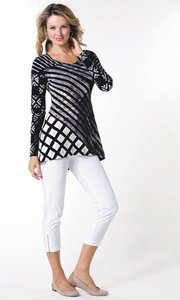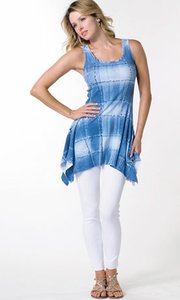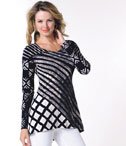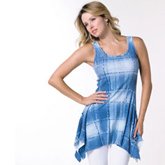Barbara Lesser: Sourced in So Cal
Los Angeles designer Barbara Lesser got her start in the industry as a sweater designer—a job that took her around the world to source sweaters out of Asia, India, South America and Italy.
But when she launched an organic-cotton line in 1991 with her husband, Mark, she decided to make it a domestic operation. The company, originally called Wearable Integrity, has evolved into the Barbara Lesser collection of casual sportswear and dresses, which is carried in Nordstrom stores as well as specialty stores including Harari in California and Arizona; B.B. One in Palm Desert, Calif.; Prestige in Palo Alto, Calif.; 5th Street Clothing in Chico, Calif.; and Alta’s in San Jose, Calif.
For Lesser, “Made in America” means “Made in Los Angeles.” Nearly everything is sourced in the Southern California region. California Apparel News Executive Editor Alison A. Nieder recently caught up with Lesser to find out about her company’s commitment to domestic production and the advantages of sourcing locally. How much of the collection is produced locally?
We produce almost 100 percent of our collection here in Los Angeles. Occasionally, I give into temptation of a fabric or technique from China or India, but that often leads to frustration, so I prefer to stick to my local suppliers.Where do you produce?
All of our sewing is done here in Los Angeles by sewing contractors who are compliant on all immigration and labor laws. Our dyeing is also done here in Los Angeles by artisan craftsmen who create unique prints using various hand techniques and chemical reactions between dyes. Because California is tough on environmental issues, we are sure that the chemicals used are somewhat benign and disposed of properly.Have you always produced locally?
When Mark and I got married and wanted to start a family, we wanted to change our travel habits and, therefore, our method of operation. Since we already had our own business, we made a business decision to start domestic production. When we got involved in organic cotton in the early ’90s, it could only be accomplished here in the states.
Once you are used to managing your own production in real time, it’s very hard to go back to importing, where you relinquish so much control.What are the advantages to domestic production? I feel I have much more control over my product. I am dealing face to face with my suppliers and can build honest relationships. We have very little cultural differences, and we even work in the same time zone! The turn time for production is greatly reduced, allowing for a faster response to my customers.
Because L.A. is the garment-dye capital of the world, we have devised a method of production that makes us extremely efficient. We utilize our core fabrics in many different ways, thus keeping our inventories under control.Do retailers and consumers ask for “Made in the USA” fashion? Why is it important to them?
At this point in time, I think we are making more of a push to shine light on our “Made in America” concept than retailers. They are too deeply entrenched in imports and can’t invalidate their other products in order to promote mine. Yet, we often get e-mails from consumers simply commenting on how happy they are with their purchase of my “Made in USA” pieces. It floors me that they actually take the time to find me online and to write about something they were pleased to find! I think this certainly feels like a groundswell.


























